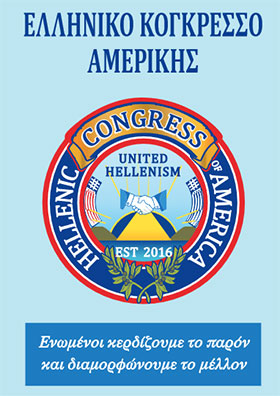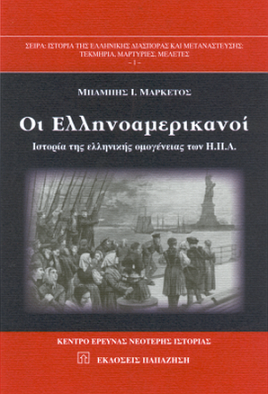ΑΠΟΨΕΙΣ ΑΝΑΓΝΩΣΤΩΝ: Phil-Hellenism and the Modern Greek State: Lord Byron and Eugene Delacroix

by: Leonidas Petrakis*, PhD
It is disheartening to witness the invective being hurled at the cultural heritage and the people of Greece during these harsh economic times for the country. German mass media and some politicians have been at the forefront of these unceasing efforts to demonize the Greeks as people and Greece as a nation.
These developments contrast sharply with the long tradition of recognition of the great contributions that Greece has made to Western Civilization. At the time of the Greek War of Independence, an international pantheon of influential people stood by the struggling Greeks and provided moral and political support as well as material help. The list of admirers of Hellenism and supporters of the Greek cause included Thomas Jefferson, the great German poet Goethe, the French writer Chateaubriand, and, arguably the most effective, Lord Byron and the French painter Eugene Delacroix.
Both Byron and Delacroix provided critical support through their political positions and influence. In addition, Delacroix used the power of the visual in his paintings to raise sympathy and funds for the Greeks; while Byron used the power of romantic poetry and his personal fortune, and sacrificed his very life for them.
Lord Byron (1788 –1824) was one of the greatest British poets of all times, and a most powerful figure in the intellectual life of Europe, with lasting influence in the artistic and literary movement known as the Romantic Period that flourished in Europe around the time of the Greek War of Independence. To match his intellectual gifts, Byron put himself through arduous physical training thereby overcoming his “club foot” handicap, and becoming a powerful horseman, boxer, and swimmer. These served him well in his political and social life, but also in his adventurous but at times reckless life style (he swam the Hellespont while waiting permission from the Turks to dock his boat in Constantinople).
From 1809 to 1811 Lord Byron went on a grand tour, a mandatory component of the classical education of the English intellectual elite. He spent considerable time in Missolonghi and the Ionian islands, Ipiros, Peloponnisos, and Athens, thereby developing an intimate appreciation of, and deep affection for, Greece, her land and people, and their cultural heritage. Many of his experiences became part of his long narrative poem Childe Harold’s Journey, the first part of which was published upon his return from Greece. The poem made him immediately famous, and at the same time brought attention and sympathy for the Greek struggle for independence.
Lord Byron was strongly opposed to Lord Elgin’s looting of the Parthenon marbles, and he denounced the pilfering in his poem The Curse of Minerva. He celebrated Ipiros and the Ionian islands. On sailing towards Patras he was deeply impressed by the spectacular white cliffs in southwestern Lefkada (he must have been reminded of the Dover Cliffs). From his classical training he knew that the Cape was also known as “Sappho’s Leap”, because Sappho leapt to her death there after being dumped by her lover Phaon. Byron celebrated the beauty of the location and the aura associated with one of the greatest lyrical poets of all time. While in Athens he learned of the Turks’ way of dealing with an adulterous woman (throwing her into the sea wrapped in a sack). He found the practice revolting, and he wrote The Giaour (The Infidel) which allowed him to highlight the barbarity of the Turks, and to contrast Christian and Muslim attitudes on justice and tolerance. He returned to this theme of the barbarity of the Turks in other poems (The Siege of Corinth).
Byron led a notoriously reckless and scandalous life that was replete with accusations of both sodomy and incest (presumably he fathered a daughter with his half sister Augusta). To avoid the severe scrutiny and disapproval in his native England, he went into self-imposed exile and never returned.
While living in Italy Byron turned fully his attention to the Greek War of Independence. In 1823, he spent large sums of his own money to refit the Greek fleet and he chartered the Brig Hercules, which brought him to Missolonghi. There he and Alexandros Mavrokordatos planned an attack on the Turkish naval base in Lepanto (Nafpaktos), with Byron paying special attention to getting heavy artillery for the expedition. But in February 1824, he fell ill and died on 19 April 1824.
The English were shocked by his sudden death, and the Greeks mourned him as a national hero. Byron’s body was embalmed and sent to England for burial where huge crowds viewed it as he lay in state, but his heart was retained at Missolonghi. The national poet of Greece Dionysios Solomos wrote the moving poem, To the Death of Lord Byron. Many Greeks to this day name their sons “Byron” in his honor. A suburb of Athens has been named after him. Near Zappeion just outside the National Garden in Athens stands a magnificent statue showing “Greece crowning Byron”. In 1881 King George I donated a marble plaque for Byron’s burial site, and Nikos Koundouros has made a film on his life.
Eugène Delacroix (1798 –1863), a leader of the French Romantic School, not only produced great works of art, but had profound influence in the later development of the Impressionist movement in painting and Symbolism in literature. Delacroix was also connected at the highest levels of the French political elite, and he served in the French Government in various positions. Just like Lord Byron, Delacroix’s influence was two-fold, both on the artistic and political front.
Delacroix was in his early twenties when he experienced a transformational event in his life -the massacre of Greek civilians by Turkish troops on the island of Chios. Chios was prosperous on account of the cultivation and trade of masticha –an item of great financial interest to the Turks. Although the majority of the island’s business and community leadership was reluctant to join the revolution and thereby alienate the Sultan, a minority of patriots forced the issue and in March 1822 brought Chios to the camp of the national revolutionaries. The Sultan was incensed and severely punished the revolting island. Some 7000 Turkish troops landed on Chios, and proceeded to utterly destroy the island, burning villages and systematically killing tens of thousands of its citizens, including the targeted extermination of all children under the age of 3. The brutality of the Turks was unprecedented, and it shocked Europe.
Delacroix was horrified by the news, and he decided to do what he could to help the Greeks. The result was his famous painting The Massacre at Chios that was displayed at the 1824 Salon and now hangs prominently in the Louvre. The painting, done in the heroic style of Géricault’s The Raft of the Medusa, shows a group of starving and sick Greeks about to be slaughtered by the Turks. The sympathy that the painting raised for the Greeks was immense throughout Europe, and it also catapulted the young Delacroix to fame. (An exact copy was shown in Chios in 2009, but it was removed when apparently the Turkish government objected.)
Delacroix produced more paintings showing his admiration for the cultural history of the Greeks and expressing his sympathy with their struggles –Greece on the Ruins of Missolonghi (a tribute to that Greek holocaust and also homage to Lord Byron), Entry of the Crusaders in Constantinople (a reminder of the catastrophe that the Crusaders wrought against the Byzantine Empire in 1204), and Combat of the Giaour and the Pasha (based on Byron’s famous poem, was used by Delacroix for fund raising on behalf of the Greeks, and now is hanging in Chicago’s Art Institute).
In 1823 Lord Byron wrote to the bickering Greek politicians as they awaited the release of a loan by the Europeans: “Greece is faced with three possibilities: to regain its freedom, or to become a vassal to European rulers, or to revert to being a Turkish province”. These are very difficult times for Greece and a modern Lord Byron or Delacroix would be most welcome. But the Greeks cannot afford to wait for a phil-Hellene Messiah. They need to take the initiative to protect their cultural heritage, project the values that have nurtured Western culture throughout the ages, and rebuild the Greek state on those values. As for the Greeks of the Diaspora –an untapped resource for Modern Greece- they need to lend a helping hand also in pulling the country from the edge of the abyss.










Σχόλια Facebook